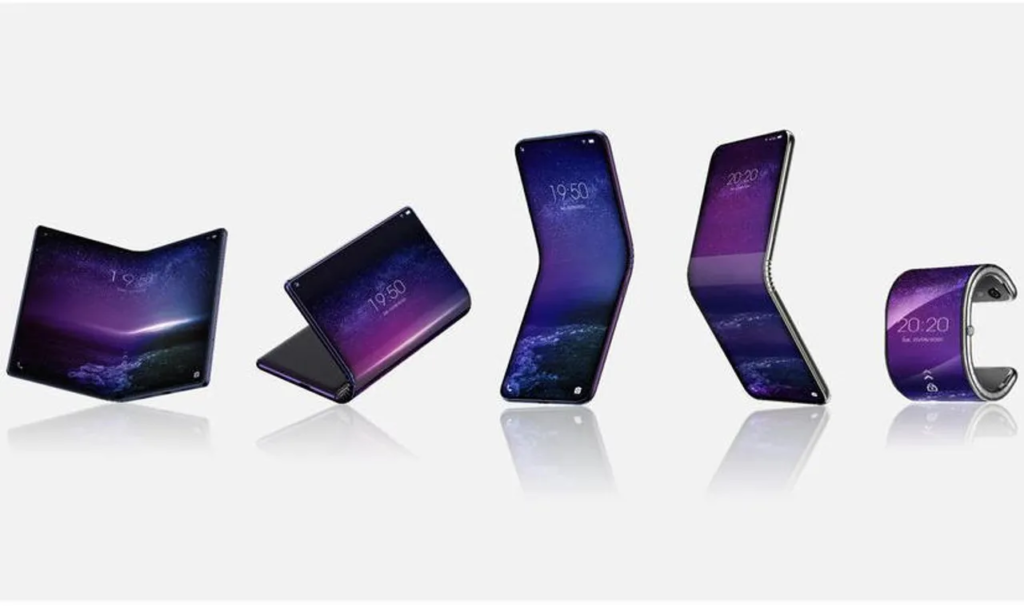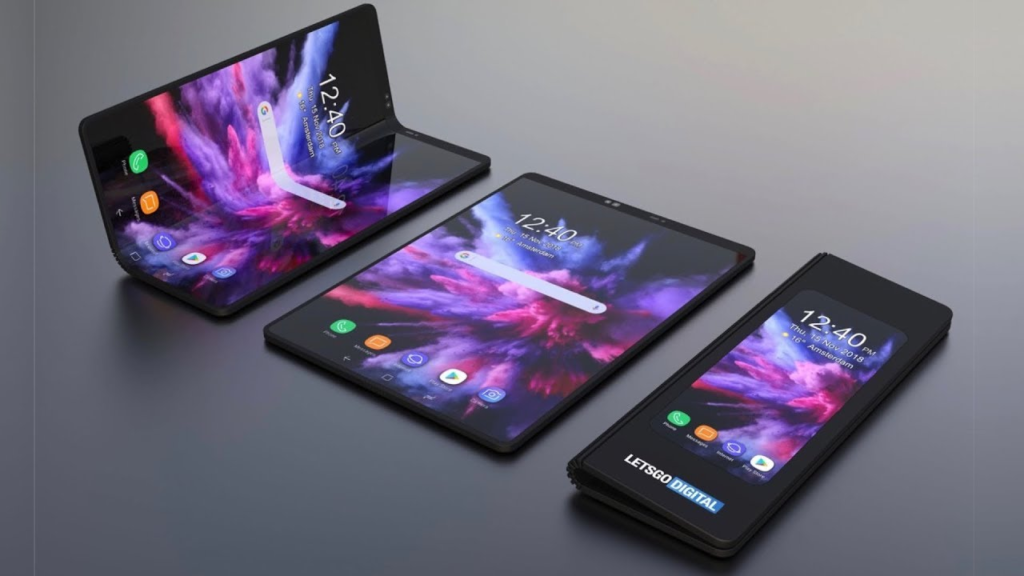Foldable devices are a new wave of smartphones and tablets that feature flexible screens, allowing users to bend, fold, or flip them without damaging the display. These futuristic gadgets combine portability and screen size, making them more convenient and versatile than traditional flat-screen phones or tablets.
With major tech giants like Samsung, Google, Huawei, and Motorola jumping into the foldable game, it’s clear that flexible screens are more than just a passing trend—they’re the next step in mobile evolution.
Explore the latest foldable tech from Samsung here.
The Evolution of Foldable Technology
The concept of foldable screens started as a dream in R&D labs, but years of innovation in OLED (Organic Light-Emitting Diode) technology have made them a reality. Unlike rigid LCD screens, OLED displays can bend and fold due to their organic materials and thin structure.

Samsung was the first major player to launch a foldable smartphone—the Galaxy Fold—in 2019. Since then, we’ve seen a rapid expansion in this category, including models like the Galaxy Z Flip, Google Pixel Fold, and Huawei Mate X series. These devices come with both horizontal and vertical fold mechanisms, giving users different form factors based on their needs.
Check out the Pixel Fold on Google’s official page.
Benefits of Foldable Devices
Foldable smartphones and tablets offer several major advantages that set them apart:
1. Bigger Screens in Smaller Bodies
You can carry a phone-sized device that unfolds into a tablet-sized screen. This is great for multitasking, gaming, and watching content.
2. Multitasking Made Easy
Most foldables support split-screen features, allowing you to run two or more apps side by side. Professionals can write emails while attending virtual meetings or browse the web while taking notes.
3. Better User Experience
From smoother transitions between modes to adaptive interfaces, foldables offer a futuristic and flexible experience that standard phones cannot match.
4. Space Efficiency
Foldables reduce the need for multiple devices. Instead of carrying both a phone and a tablet, one foldable device can do the job of both.
Limitations of Foldable Devices

Despite their appeal, foldable devices do have some drawbacks that prevent mass adoption:
1. High Prices
Foldables often cost between $1,000 and $2,000, putting them out of reach for many consumers.
2. Durability Concerns
While flexible screens have improved, they are still more prone to wear and tear than traditional glass displays. Some users report issues with screen creases or hinge mechanisms over time.
3. Battery Life
Larger, brighter screens consume more power, and foldables generally have smaller batteries due to design constraints.
4. App Compatibility
Not all apps are optimized for the foldable screen format, which can lead to glitches or poor user experience.
Popular Foldable Devices in 2025
Here are some of the most talked-about foldables currently on the market:
Samsung Galaxy Z Fold5
This high-end device unfolds into a 7.6-inch mini tablet, perfect for multitasking and media consumption. It features water resistance, improved hinge design, and S Pen support.
Samsung Galaxy Z Flip5
Targeting a younger audience, the Flip5 folds like a clamshell and fits easily in a pocket. It’s ideal for quick selfies and social media usage.
Google Pixel Fold
Google’s first foldable offers a near-stock Android experience and strong camera capabilities. It’s aimed at users who want a compact but powerful foldable device.
Huawei Mate Xs 2
Known for its outwards folding design, this model has a larger screen area but is currently limited to certain global markets due to trade restrictions.
Motorola Razr 2023
Nostalgia meets modern tech in this foldable version of the classic Razr. Its sleek design and compact fold make it a stylish pick.
The Future of Foldable Devices
The future of foldable devices looks promising. As the technology becomes more affordable and durable, more consumers are expected to make the switch. According to market research firm IDC, global shipments of foldable phones are projected to reach 30 million units in 2025, up from just 1.9 million in 2020.
Here’s what the future might hold:
- Rollable Devices: Instead of folding, these screens roll out to increase screen size on demand.
- Stronger Materials: Next-gen flexible glass and tougher hinges will increase lifespan.
- AI Integration: Smarter devices that adapt based on how the screen is folded or used.
- Mid-Range Foldables: Brands may introduce more affordable foldable models for mass market appeal.
Are Foldables Right for You?
If you’re a tech enthusiast, a multitasker, or someone who loves trying new form factors, a foldable device could be a worthy investment. However, if you prefer a device that’s rugged, affordable, and simple, you might want to wait for the next few generations to iron out remaining issues.
Foldables represent the merging of innovation, convenience, and design. As more brands enter the race and software becomes better optimized, these devices may become as common as today’s smartphones.
Compare the best foldable devices of 2025 here.
Final Thoughts
Foldable devices are no longer science fiction—they’re real, functional, and becoming increasingly mainstream. While still in a premium segment, the future promises better designs, lower prices, and more user-friendly apps. Whether you’re a gadget lover or a casual phone user, the age of foldable screens is worth keeping an eye on. As innovation unfolds—literally—technology is giving us new ways to interact with the world around us.
Stay updated with the latest tech trends on TechCrunch or The Verge.
Also Read – Virtual and Augmented Reality Are Changing the World Fast





